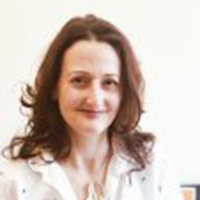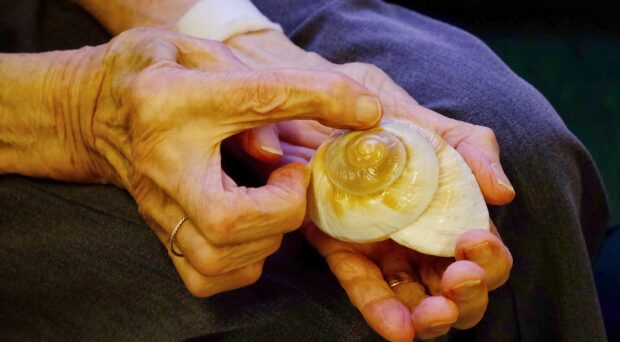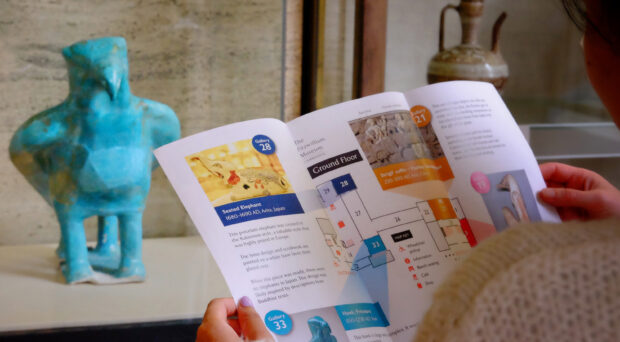The 250th anniversary year of explorer James Cook’s arrival in Australia and Aotearoa, New Zealand has offered opportunities for the Museum of Archaeology & Anthropology (MAA) to reflect on the ways we work with Cook voyage collections.
The common perception of Cook as a heroic discover of new lands ignores the long histories of Oceanic voyaging, settlement and trade. Skilled navigators had comprehensive geographical knowledge and used the stars, migrating birds, wave and cloud patterns to travel huge distances in double-hulled and outrigger canoes. In many parts of Oceania and North America, Cook is seen as the embodiment of colonialism and its unwelcome changes. The material collected on all three of Cook’s voyages (1768- 1780) evokes complex emotions from anger and grief to powerful joy at ancestral connections.
Over the last 30 years MAA has been committed to working with reclaimed Indigenous perspectives which offer alternative views on these colonial histories. As a result, we collaborate with Indigenous researchers, community members, artists and traditional knowledge holders to update our understandings of the material we care for. These details are disseminated and shared in exhibitions (often collaborative and co-curated), in workshops and publications, and lent internationally. However, only about 1% of MAA’s collections are on display and this research usually occurs behind closed doors in the Museum’s workroom. As a result, few people are fully aware of the work that goes on behind the scenes.
We are not like a library, where material is picked off an open shelf. Historic and contemporary material is carefully but densely packed in layers of acid-free tissue in purpose-built boxes, stacked on shelves from 3- 4m high, and usually needs two people on ladders to get them down. A visit can take a day or more to prepare, a day to host and another day to return material to storage with extra time to update the on-line database records with comments or new digital images.
As the Collections Manager for Anthropology, my role is to care for the collections, to make them accessible for research and exhibitions, to host visitors and prepare material for loan. I have to balance the needs of the objects for long term preservation with the needs of our multiple audiences. Understanding and working within Indigenous protocols is an essential part of that balance. Many Indigenous people, including the Māori, see museum collections as more than just objects and artefacts. Māori taonga (ancestral treasures) are the spiritual personification of the ancestors. They can be tangible, encompassing carvings, textiles and natural resources as well as intangible such as language, knowledge and spiritual beliefs.
A visit by the Māori delegation from the iwi (tribes) of Tūranganui-a-Kiwa (Poverty Bay), North Island’s east coast and Te Aparangi (Royal Society of New Zealand) offered the opportunity to discuss the taonga scheduled to return to Aotearoa New Zealand. Twenty-three taonga would be exhibited at the region’s Tairāwhiti Museum in ‘Tu te Whaihanga: A Recognition of Creative Genius’. This would be the first time these taonga had gone home since they had been brought to England in 1771. They had been acquired 250 years earlier during James Cook’s first Oceanic voyage. On his return Cook had presented them to his patron, the powerful Lord of the British Admiralty, the Earl of Sandwich, who in turn gifted them to his alma mater, Trinity College, at the University of Cambridge. They were exhibited in the College Library and in 1912 were lent to the Museum.
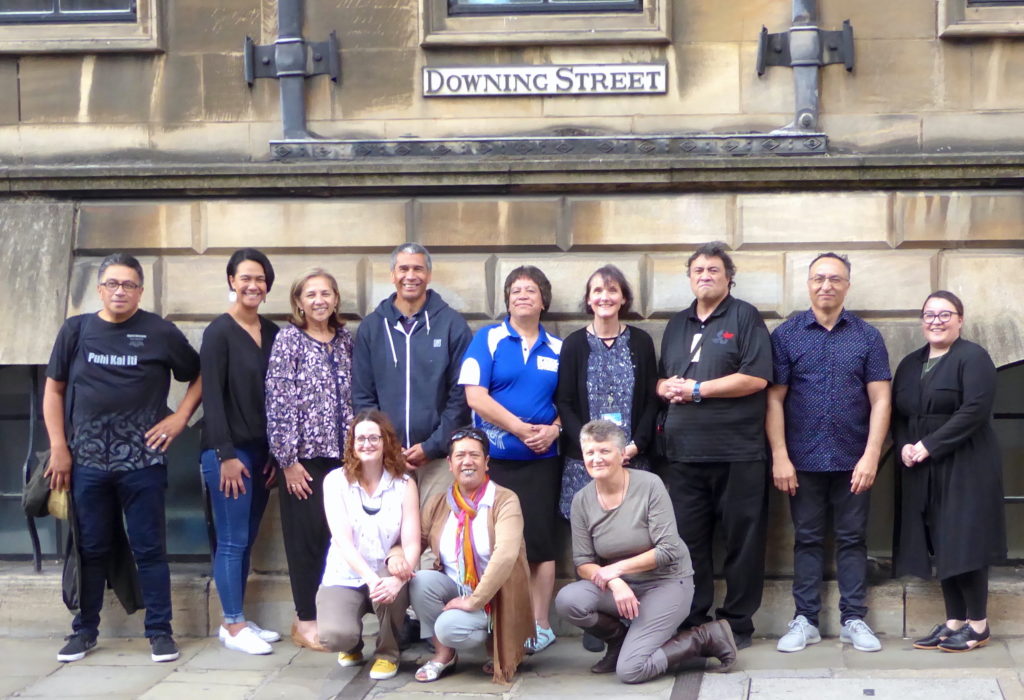
The 11-strong delegation visited MAA to reconnect with the taonga and plan for future collaborations. It is always difficult to know how such a large visit will go. Everyone will have their own agenda and react differently to historic taonga. Some may want to touch and physically interact with the taonga while others stand back. There are also questions of handling practice to which there is no standard answer. Should historic taonga be handled in the same way as similar contemporary material? Should we insist on gloves to protect them from finger marks, and shield the visitor from historic pesticides such as arsenic and naphthalene? Our protocol is to facilitate community access through direct physical contact with taonga. We highlight the potential risks but leave the choice of gloves to the visitor, ensuring all hands are safely washed afterwards.
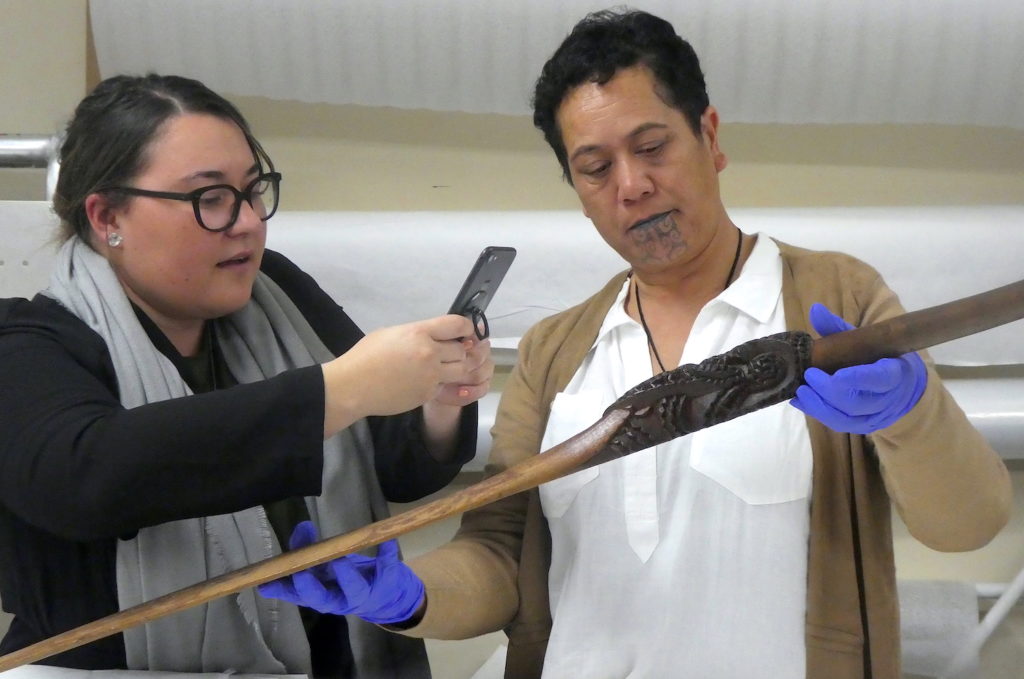
The visit began with a karakia (incantations and prayers) to invoke spiritual guidance and protection. We also followed Māori protocols restricting food and water near taonga. The group then engaged with hoe (paddles), the wooden, stone and whalebone weapons, and a canoe bailer, discussing their use, whakapapa and collection histories. From journal accounts we know the two hoe were part of excited exchanges of paddles, weapons and clothing when a waka (canoe) came alongside Cook’s ship, Endeavour, off Whareongaonga, near Gisborne on 12 October 1769.
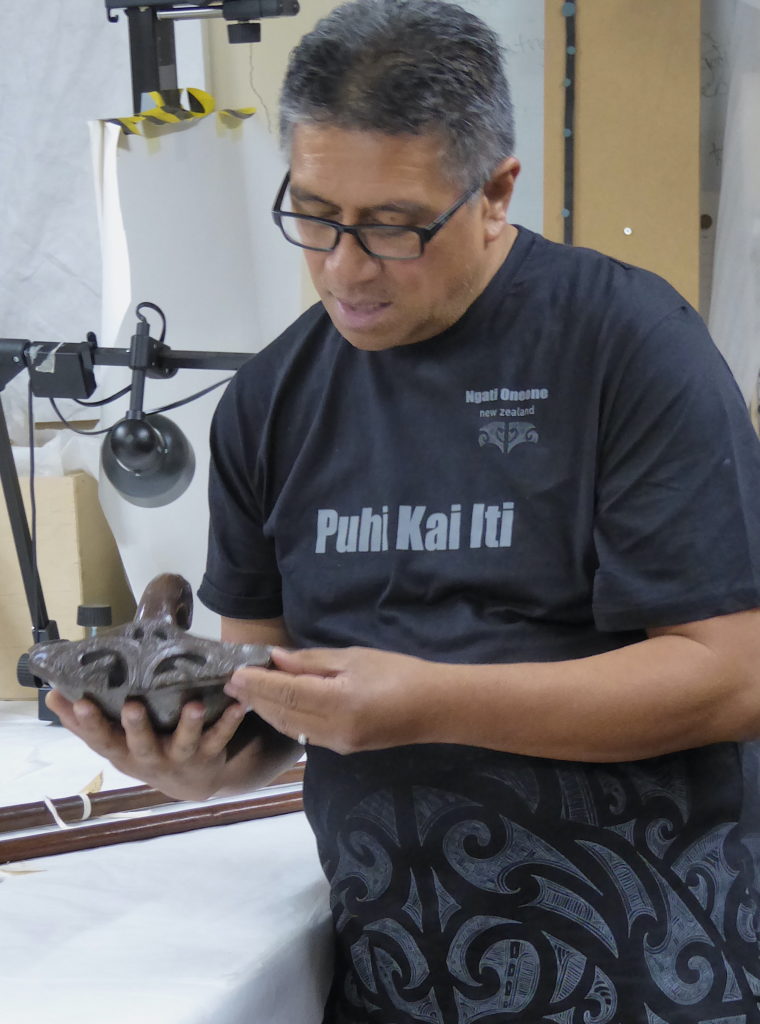
We do not always know the exact transactions during which these taonga were exchanged, though it is likely many were gifts intended to bind the visitors into local networks. However, not all encounters with taonga are simple, then or now. The first meetings between Māori and the European voyagers in 1769 were violent and shots were fired. The Ngāti Oneone leader, Te Maro, the Rongowhakaata chief Te Rakau and others were killed. Jody Wylie of the Rongowhakaata iwi (tribe) examined two long bladed wooden weapons which he argued could have been taken from the body of his ancestor, Te Rakau. While Surgeon William Monkhouse described the horrific encounter and some of Te Rakau’s weapons, it is not clear if they were taken from him. If they were, are the weapons at MAA part of this theft or are they held in other museum’s collections? These questions may remain unanswered but the uncomfortable histories and conflict they represent should be recognised and interrogated, and the responsibilities of museums vigorously debated.
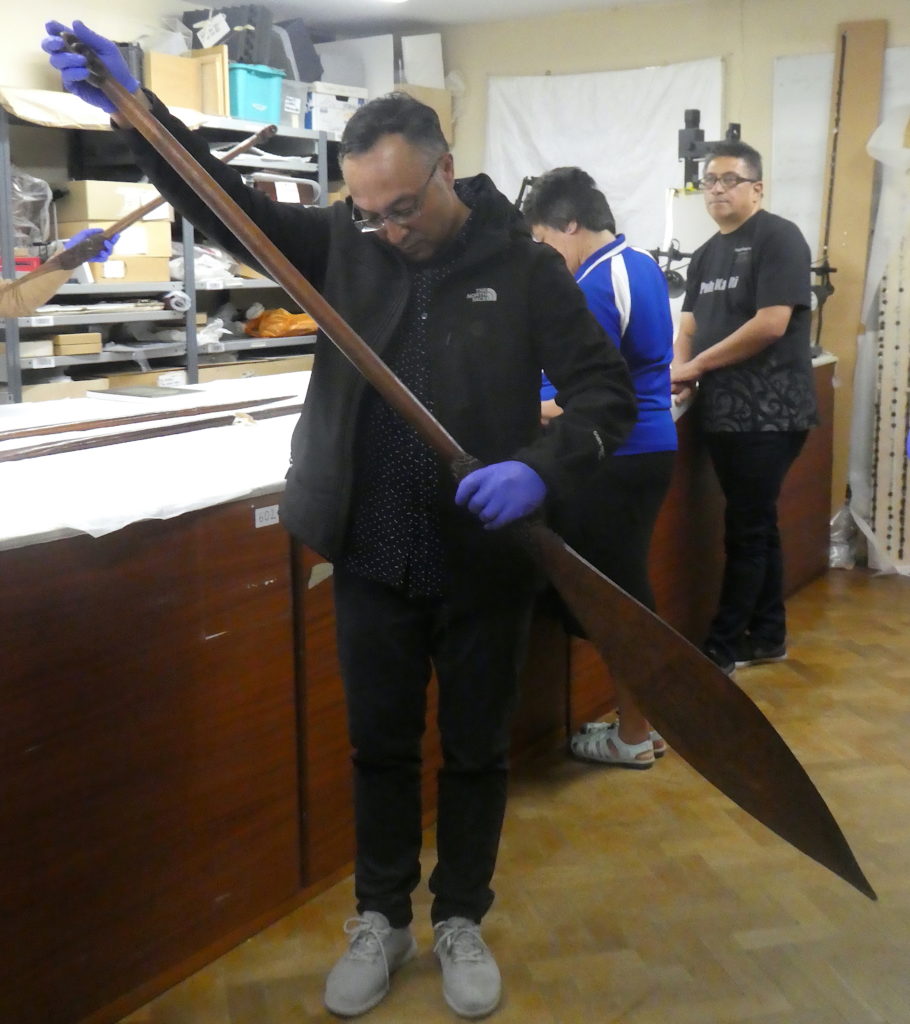
The visit was also an opportunity to discuss the pohiri or welcome ceremony, to be held as part of the return of the taonga at the meeting house on the Te Poho o Rāwiri marae. Debates had raged over whether the taonga could be removed from their padded protective crates. We hoped to find a middle ground that would leave the taonga in their protective crates and limit the impact of changing temperatures and humidity following the sub-zero temperature of the aircraft hold. Consequently, we suggested a patu onewa (stone hand club) could be used during the ceremony as the stone was solid and stable, unlikely to be impacted by environmental changes. Nick Tupara demonstrated how it was used in battle, slashed downwards against an enemy. These movements are echoed in their ceremonial use today.
Because of these discussions we were able to make a separate travel case for the club so it could be easily removed. It also laid the groundwork for two follow-up visits funded by the British High Commission in New Zealand for the project He Whai Mātauranga (In Pursuit of Knowledge). This facilitates access to taonga held in the UK and supports research to reconnect mātauranga Māori (Māori knowledge) with communities and iwi (tribes).
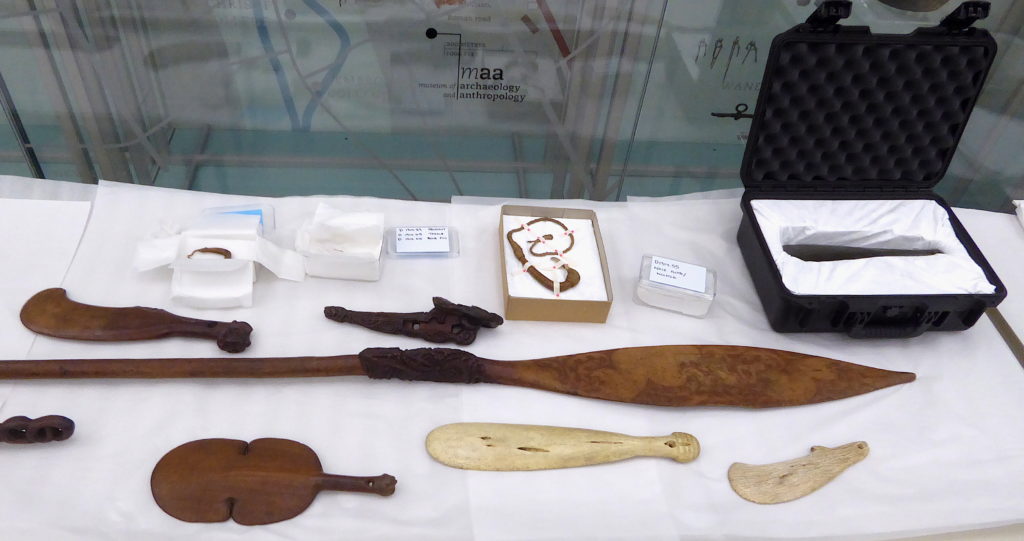
The follow-up to this blog post, Lessons learnt: engaging with Māori taonga, looks at the loan of the taonga to the exhibition Tu te Whaihanga: A Recognition of Creative Genius, Tairāwhiti Museum, Gisborne, and its impact on my work in the Museum.
Videos from the workshops held before the exhibition and the on-line exhibition can be seen at https://tairawhitimuseum.org.nz/exhibition/tu-te-whaihanga-online-exhibition/
A basic searchable online catalogue of MAA’ collections can be found at: collections.maa.cam.ac.uk

